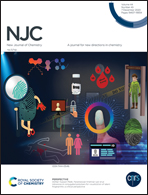Superhard three-dimensional carbon with one-dimensional conducting channels
Abstract
The search for superhard carbon materials with metallic conduction is of great significance to both scientific research and industrial application. In this work, a metallic superhard carbon allotrope, C10, with a structure belonging to the space group of Pmmm was proposed. It has an sp2 + sp3 hybridized carbon network with 10 atoms in an orthorhombic unit cell. C10 has both dynamical and mechanical stability. Its total energy is 0.247 eV per atom higher than that of diamond and lower than those of many previously reported carbon phases. C10 exhibits excellent mechanical properties with a hardness of 58.70 GPa, which is higher than those of many previously reported metallic carbon phases. Its weakest tensile strength and shear strength are 83.68 GPa and 65.96 GPa, respectively, which fully demonstrate its superhard character. The calculated electronic band structure and density of states reveal that C10 has a metallic nature. The calculated band-decomposed charge density shows that electrons derived from the sp2-hybridized carbon atom form one-dimensional conducting channels along the c direction.



 Please wait while we load your content...
Please wait while we load your content...